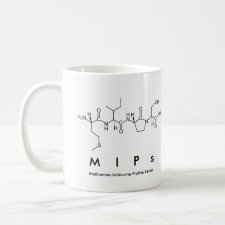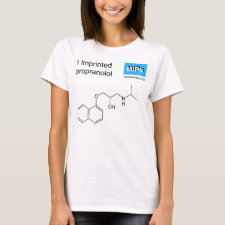
Authors: Suedee R, Naklua W, Laengchokshoi S, Thepkaue K, Pathaburee P, Nuanplub M
Article Title: Investigation of a self-assembling microgel containing an (S)-propranolol molecularly imprinted polymer in a native tissue microenvironment: Part II. Biological application and testing.
Publication date: 2015
Journal: Process Biochemistry
Volume: 50
Issue: (4)
Page numbers: 523-544.
DOI: 10.1016/j.procbio.2015.01.003
Alternative URL: http://www.sciencedirect.com/science/article/pii/S1359511315000045
Abstract: A molecularly imprinted polymer (MIP) was produced that was selective for the (S)-propranolol enantiomer yet formed different surface structures when it was being incorporated into a microgel in the presence of different and variable amounts of precursor chemicals and still captured the drug molecule using non-covalent bonds. This microgel was then tested for its ability to selective drug delivery in a biological system. The MIP-loaded microgel containing (S)-pyrenebutyrated propranolol to isolated rat skin led to a significant transient increase in the calcium content and to the proliferation of keratinocytes in the tested skin. The facilitated diffusion and selective release of the (S)-propranolol in vivo indicated that the MIP had reinforced the induced changes in the physiological processes of a transmembrane protein that were dependent on changes to the calcium levels. Also, this result showed that the transfer of the (S)-propranolol across the membrane to the cytoplasmic and extracellular domains from within the altered structures allowed for induced attenuation of cells that were downregulated by signaling. This led to the differentiation of a stem cell that was then linked to induction of structural changes to the dysfunction of mitochondrial bioenergetics as a result of disruptions to the reactions of the Krebs cycle. In addition fluctuations of a second messenger affected protein interactions at the tight junctions. To the best of our knowledge this is first report to describe that environmentally induced specific patterns of MIPs can facilitate the expression of mRNA from specific DNA in vivo to provide for the expression of specific proteins that can facilitate the transfer of a drug though a living skin. The result strongly supports the view that (S)-propranolol induces a selective inhibition of growth, activation of mitochondrial apoptosis and attenuation of self-renewal, differed markedly from the drug administered orally. Thus, using this approach with a suitably designed MIP it may provide for unraveling the intricate machinery in cells and aid the development of therapeutic agents.
Author keywords: Molecularly imprinted polymers, Macroscopic surface, Developmental biology, Cell biology, Histology



Join the Society for Molecular Imprinting

New items RSS feed
Sign-up for e-mail updates:
Choose between receiving an occasional newsletter or more frequent e-mail alerts.
Click here to go to the sign-up page.
Is your name elemental or peptidic? Enter your name and find out by clicking either of the buttons below!
Other products you may like:
 MIPdatabase
MIPdatabase









